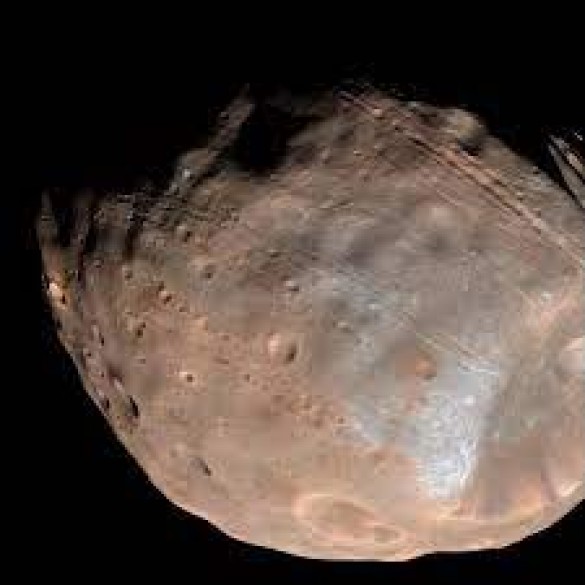
We've all heard of the Red Planet, Mars. But do you know about its loyal companions? Yes, Mars has two small moons, Phobos and Deimos. Their origins and mysterious properties have perplexed scientists for decades. Let's dive into their celestial mysteries together, shall we?
II. The Moons of Mars
Mars boasts two moonlets named after the Greek gods of fear (Phobos) and terror (Deimos), symbolizing the dark and barren Martian landscape.
A. Phobos: The Inner Moon
Phobos, the larger and closer of the two moons, orbits so closely to Mars that it rises and sets twice a day! It is known for its unique, potato-like shape and prominent Stickney crater.
B. Deimos: The Outer Moon
Deimos, while smaller than Phobos, is farther from Mars. Its smooth surface and irregular shape resemble a cosmic potato tumbling through space.
III. Origins of Phobos and Deimos
What are the roots of these celestial companions of Mars? Theories abound, but the consensus is yet to be reached.
A. The Capture Theory
Some scientists believe that Mars snared these moons from the nearby asteroid belt. This 'capture' scenario seems plausible due to the moons' size and irregular shape, characteristics similar to asteroids.
B. The Impact Theory
Contrarily, other researchers argue that the moons are remnants of a colossal impact event. Mars may have been struck by a large body, with the debris eventually coalescing into Phobos and Deimos.
IV. Mysterious Properties of Phobos
Phobos, despite being the larger moon, holds numerous secrets.
A. Orbital Mysteries
Interestingly, Phobos is slowly moving towards Mars and will ultimately crash into it or break apart, creating a ring around the planet.
B. Surface Features
Phobos' surface is riddled with strange grooves, some of which are believed to be stress fractures caused by the gravitational pull of Mars.
V. Mysterious Properties of Deimos
Deimos, too, offers a wealth of intrigue.
A. Irregular Shape and Size
Its small, irregular shape and smooth surface suggest that it may be a rubble pile instead of a solid body.
B. Surface Features
Deimos also exhibits mysterious surface features, including craters and a layer of regolith that puzzles scientists.
VI. Importance of Phobos and Deimos to Space Exploration
Unraveling the mysteries of these moons could pave the way for future space exploration.
A. The Role in Future Mars Missions
Scientists envision these moons as stepping stones for manned missions to Mars. A stopover at Phobos or Deimos could save significant resources and ensure safer Martian missions.
B. Potential for Scientific Discovery
Understanding Phobos and Deimos could reveal clues about the solar system's early history and the process of moon formation, sparking groundbreaking scientific discoveries. Unveiling the secrets of Phobos and Deimos could reshape our understanding of the cosmos. As they continue to puzzle and fascinate, they remind us of the vast, unexplored frontiers that await humanity's daring and curiosity.
PM Modi's Scheduled Visit to Rajasthan and Gujarat This Week
The Malabar UFO Incident: An Enigmatic Sighting of Unidentified Flying Objects
The Intricate Art of Nanoscale 3D Printing: Changing the Face of Modern Manufacturing